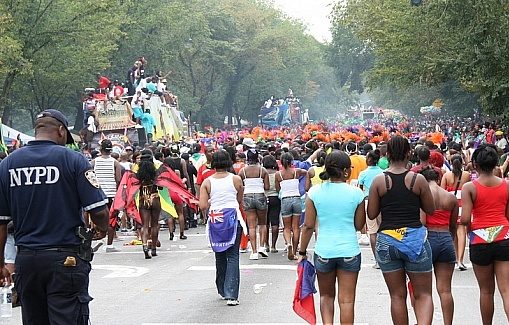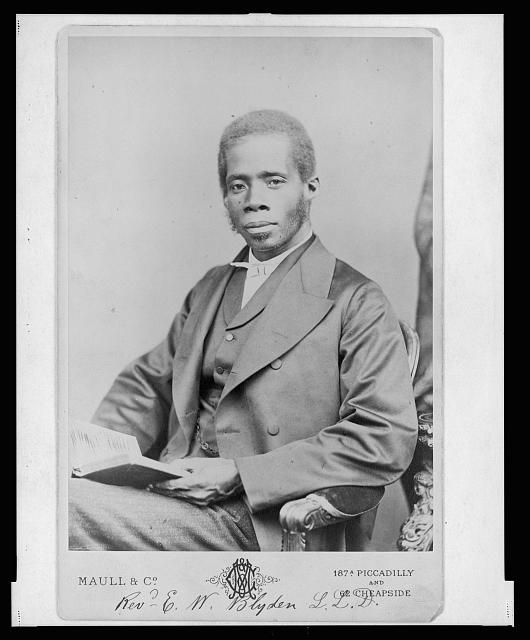
Its National Caribbean-American Heritage Month and a time to celebrate the rich, historical, cultural and economic contributions of Caribbean immigrants to the U.S. that date back to slavery. Here are six Caribbean immigrants you may not know who impacted U.S. history dating back to early 1790.
1: Jean Baptiste Point du Sable
Jean Baptiste Point du Sable is regarded as the founder of the city of Chicago, then called Eschikago. Point du Sable was born in 1745 in Saint-Marc in Saint-Domingue (now Haiti). He was the first permanent resident of what became Chicago, Illinois after he moved to settle at the mouth of the Chicago River in early 1790.
However, by 1800 he sold his property and moved to St. Charles, Missouri, where he died in 1818. In Chicago, a school, museum, harbor, park and bridge have been named, or renamed, in his honor; and the place where he settled at the mouth of the Chicago River is recognized as a National Historic Landmark, now located in Pioneer Court. The US Postal Service has also honored Point du Sable with the issuance of a Black Heritage Series, 22-cent postage stamp on February 20, 1987.
2: Prince Hall
Prince Hall was a noted abolitionist in Boston and is the founder of Prince Hall Freemasonry. Prince Hall was born in Bridgetown, Barbados before moving to Boston where he worked as a peddler, caterer and leatherworker, owning his own leather shop. He lobbied for education rights for black children and was active in the back-to-Africa movement. Hall also encouraged enslaved and freed blacks to serve the American colonial military. Hall would later found “Black Freemasonry” in the United States, known today as Prince Hall Freemasonry. He formed the African Grand Lodge of North America and was unanimously elected its Grand Master and served until his death in 1807.
A tribute monument was erected to Hall in Copp’s Hill on June 24, 1835 in his name next to his grave marker. The inscription reads: “Here lies ye body of Prince Hall, first Grand Master of the colored Grand Lodge in Mass. Died Dec. 7, 1807.”
3: Edward Wilmot Blyden
Edward Wilmot Blyden was born in the U.S. Virgin Islands (then the Danish West Indies) to Free Black parents who claimed descent from the Igbo of the area of present-day Nigeria. He is considered the father of Pan-Africanism. He was educated and mentored by John Knox, an American Protestant minister and later became an educator, writer, diplomat, and politician primarily in Liberia after being refused to enroll in the Rutgers Theological College due to his race. Blyden then went to Liberia, the colony set up in the 1830s by the American Colonization Society (ACS) in West Africa, where he became deeply involved in its development. His writings on Pan-Africanism were influential and attracted attention in the sponsoring countries as well. He felt that Zionism was a model for what he called Ethiopianism, and that African Americans could return to Africa and redeem it.
Due to his religious affiliations, in the late 19th century Blyden publicly supported the creation of a Jewish state in Israel; he praised Theodore Herzl as the creator of “that marvelous movement called Zionism.”
He once wrote: “‘Let us do away with the sentiment of Race. Let us do away with out African personality and be lost, if possible, in another Race.’ This is as wise or as philosophical as to say, let us do away with gravitation, with heat and cold and sunshine and rain. Of course, the Race in which these persons would be absorbed is the dominant race, before which, in cringing self-surrender and ignoble self-suppression they lie in prostrate admiration.”
4: John Brown Russwurm
John Brown Russwurm, the mixed-race son of an English merchant father and an unknown black slave mother, was born in Port Antonio, Jamaica in 1799 and came as a child to the United States with his father. He later became the first African American to graduate from Bowdoin College. As a young man, Russwurm moved from Portland, Maine, to New York City, where he was a founder with Samuel Cornish of the abolitionist newspaper, Freedom’s Journal, the first paper owned and operated by African Americans. Russwurm became supportive of the American Colonization Society’s efforts to develop a colony for African Americans in Africa, and he moved in 1829 to what became Liberia. In 1836 Russwurm was selected as governor of Maryland in Africa, a small colony set up nearby by the Maryland State Colonization Society. He served there until his death in 1851. The colony was annexed to Liberia in 1857.
A statue of John Russwurm was erected at his burial site at Harper, Cape Palmas, Liberia. In 2002, scholar Molefi Kete Asante listed John Brown Russwurm on his list of 100 Greatest African Americans.
5: Hubert Julian
Hubert Julian was a Trinidad-born aviation pioneer who earned the nickname “The Black Eagle.” He was the son of a cocoa plantation manager and migrated to Canada in 1914, where he claimed to have learned to pilot an aeroplane and served as a Lieutenant in the Royal Canadian Air Force. In 1921 he patented the “Airplane Safety Appliance,” a combination parachute and propeller. Julian emigrated from Montreal to Harlem in 1921. His first flight above Harlem occurred during the 1922 Universal Negro Improvement Association Convention, when he flew over the parade in a plane decorated with UNIA slogans. That flight led to his appointment as head of the organization’s new Aeronautical Department. He made his first parachute jump on 3 September 1922, at an airshow at Curtiss Field on Long Island headlined by black pilot Bessie Coleman. Several more jumps followed in the next year, at Curtiss Field and at Hasbrouck Heights, New Jersey. During one jump in New Jersey in June 1923, Julian played “I’m Running Wild” on the saxophone. He became the first black person to fly Trans Atantic Solo, and East to West Coast of America. Hubert Fauntleroy Julian died in the borough of The Bronx, New York City, in February 1983. He is buried at the Calverton National Cemetery in Suffolk County, New York. His passing went largely unnoticed.
6: Jessie Waddell

Jessie Waddell is the original founder of what is today the West Indian American Day Carnival in NYC. Waddell, who was born in Tunapuna, Trindiad migrated to Harlem, NYC in 1924. She missed carnival in her native land so much that she decided to stage her own in her new homeland. So Waddell, who was also a musician, hosted the first indoor carnival in Harlem, NYC as a masquerade ball. With her ten-piece orchestra the Nu-Tones, she promoted some of the biggest masquerade balls at the Rennaisance Ball room in Harlem. In 1947, she obtained the first permit from then Mayor James O’Dwyer to stage the first outdoor carnival parade along Lennox Avenue in Harlem from 110th Street to 142nd Street. She later registered the first formal organization for hosting the carnival – the West Indies Day Association which was registered in 1948. Waddell later returned home to Trinidad and passed away in 1975.
SOURCE: News Americas Now








